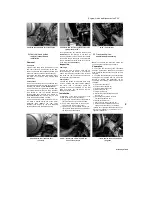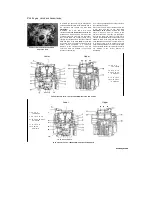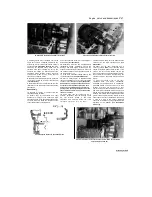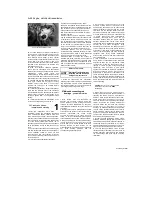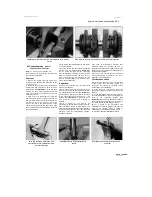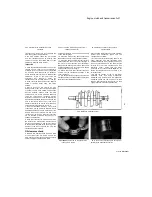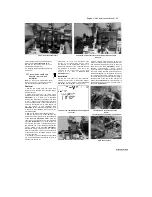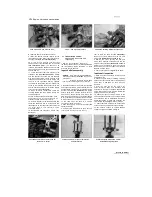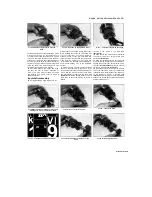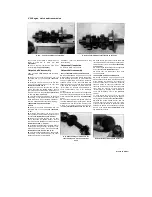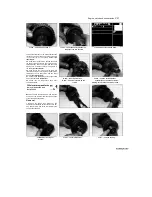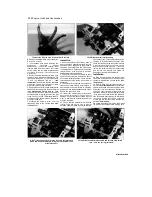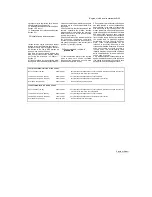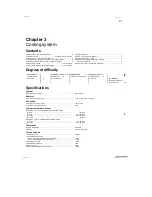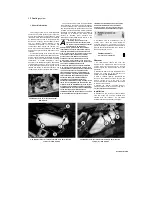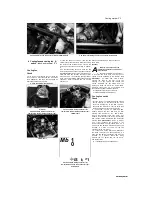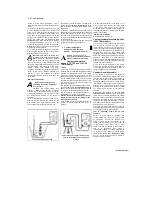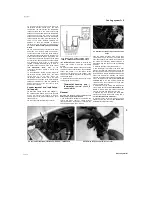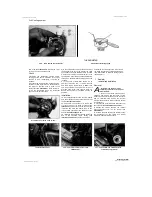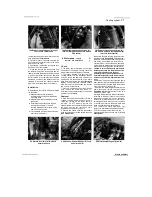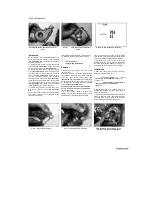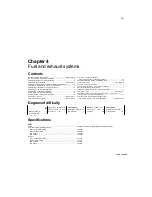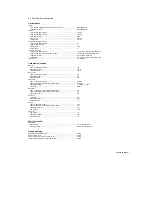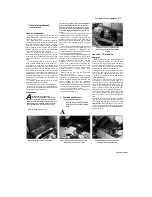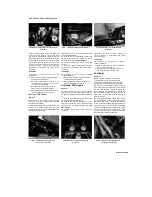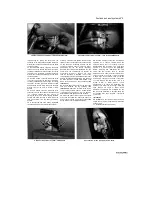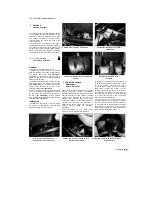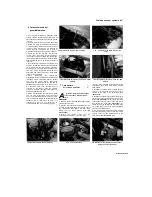
Engine, clutch and transmission 2»59
it locates correctly against the flat in the end
of the fork shaft (see Section 19).
15 Install the transmission output shaft (see
Section 30, Step 11).
16 Reassemble the crankcase halves (see
Section 25).
33 Initial start-up after overhaul
1 Make sure the engine oil level and coolant
level are correct (see
Daily (pre-ride) checks).
2 Make sure there is fuel in the tank, then turn
the fuel tap to the ON or RES position as
required, and set the choke on.
3 As there isn't an oil pressure warning light
fitted, an oil pressure check must be carried
out. Follow the procedure in Chapter 1,
Section 32.
4 If the oil pressure test is satisfactory, allow
the engine to run at a moderately fast idle until
it reaches operating temperature and check
that there are no oil and coolant leaks. Stop
the engine.
5 Check carefully that the transmission and
controls, especially the brakes, function
properly before road testing the machine.
Refer to Section 34 for the recommended
running-in procedure.
6 Upon completion of the road test, and after
the engine has cooled down completely,
recheck the valve clearances (see Chapter 1)
and check the engine oil and coolant levels
(see Da/7y
(pre-ride) checks).
34 Recommended running-in
procedure
1 Treat the machine gently for the first few
miles to make sure oil has circulated
throughout the engine and any new parts
installed have started to seat.
2 Even greater care is necessary if the engine
has been rebored or a new crankshaft has
been installed. In the case of a rebore, the
bike will have to be run in as when new. This
means greater use of the transmission and a
restraining hand on the throttle until at least
600 miles (1000 km) have been covered.
There's no point in keeping to any set speed
limit - the main idea is to keep from labouring
the engine and to gradually increase
performance up to the 600 mile (1000 km)
mark. These recommendations can be
lessened to an extent when only a new
crankshaft is installed. Experience is the best
guide, since it's easy to tell when an engine is
running freely. The accompanying table
indicates maximum engine speed limitations,
which Yamaha provide for new motorcycles,
can be used as a guide.
3 If a lubrication failure is suspected, stop the
engine immediately and try to find the cause.
If an engine is run without oil, even for a short
period of time, severe damage will occur.
1991 to 1995 TDM models and all XTZ models
Up to 100 miles (150 km)
4000 rpm max
Vary throttle position/speed. Do not use full throttle. Stop the engine and let it cool for
5 to 10 minutes after every hour of operation.
100 to 300 miles (150 to 500 km)
5000 rpm max
Vary throttle position/speed. Do not use full throttle
300 to 600 miles (500 to 1000 km)
6000 rpm max
Vary throttle position/speed. Use full throttle for short bursts
Over 600 miles (1000 km)
8000 rpm max
Do not exceed tachometer red line
1996-on TDM models and all TRX models
Up to 100 miles (150 km)
5000 rpm max
Vary throttle position/speed. Do not use full throttle. Stop the engine and let it cool for
5 to 10 minutes after every hour of operation.
100 to 300 miles (150 to 500 km)
6000 rpm max
Vary throttle position/speed. Do not use full throttle
300 to 600 miles (500 to 1000 km)
7000 rpm max
Vary throttle position/speed. Use full throttle for short bursts
Over 600 miles (1000 km)
8000 rpm max
Do not exceed tachometer red line
Started by Stalker

